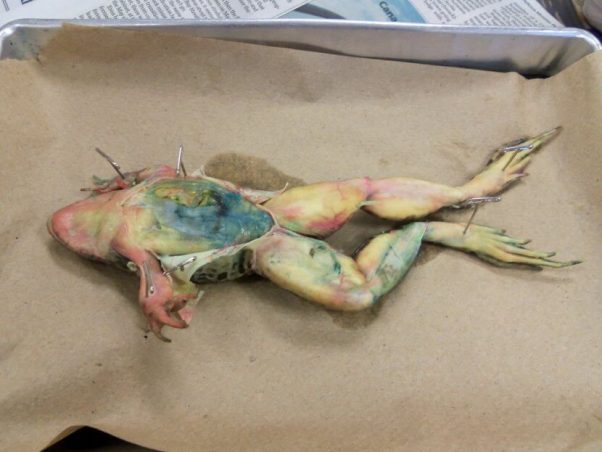More Than 10 Million Animals Are Used for Dissection Each Year—PETA Is Changing That
Here’s a shocking fact: Despite advancements in technology helping to improve medical training around the world, K–12 students in the U.S. are still asked (and sometimes forced) to cut into dead animals in arbitrary and unnecessary dissection labs. In fact, millions of animals like frogs and fish—who are taken from their homes in the wild—are killed for this reason. This is all despite impressive, modern simulation companies like eMind, Froggipedia, MERGE, SynDaver, and others who offer high-tech and ethical options to replace the use of animals.
PETA—along with California Assembly Member Ash Kalra, the Physicians Committee for Responsible Medicine, and Social Compassion in Legislation—recently introduced a historic bill in California (AB 1586) to end dissection in K–12 classrooms and replace it with modern, safe, cost-saving, and effective non-animal teaching methods.
Educators, scientists, doctors, nurses, students, parents, and even a molecular biologist showed their support—along with over 3,000 other compassionate Californians! And the bill had the support of progressive teacher groups around the country—such as the United Federation of Teachers’ Humane Education Committee, the Institute for Humane Education, and the National Hispanic Medical Association that represents more than 50,000 licensed Hispanic physicians practicing throughout the country. While the bill didn’t pass (just missing by one vote!), it’s a huge step forward in informing the public that animal dissection is cruel, wasteful, and unnecessary—and the fight is far from over. (Read more about the bill here.)
Despite what some teachers tell students, most animals used for dissection do not die “humanely.” One PETA investigation into a mainstream biological-specimen supply company, Bio Corporation, showed pigeons being drowned in crates and crayfish being injected with latex while they were still alive.
Not only is animal dissection as old-fashioned as using an abacus—it can actually deter students from science. Many adults and current students can think back to a time when they were asked to cut into a cat, pig, frog, or other animal—how disgusting and toxic the formaldehyde (which is a known carcinogen) smelled in the hallways and how they were oftentimes bullied or teased for speaking out against dissection. Dissection has no place in the modern classroom—it must end. It will end—and PETA is leading the charge with legislative efforts, donations to schools to replace it, and support of students who say no to cutting up dead animals.

Using animals for a one-off lesson that many students don’t take seriously and see as a joke should be concerning for parents and educators who want high standards for education—and it’s also speciesist. Treating sensitive, intelligent animals like frogs, pigs, rats, sharks, pigeons, and others as nothing but classroom tools to be killed, chopped apart, and discarded is unethical and teaches impressionable students the wrong lesson: that those who are different from us are less worthy of consideration and respect.
Help us make history for animals by making animal dissection a thing of the past. If you’re a parent or an educator, check out PETA.org/Dissection for ways to take action. Students, you have even more power—use your voice by checking laws in your state and refusing to dissect animals when asked. Need help? We’re here for you—contact our advisers and we’ll help you cut out dissection in your school.

